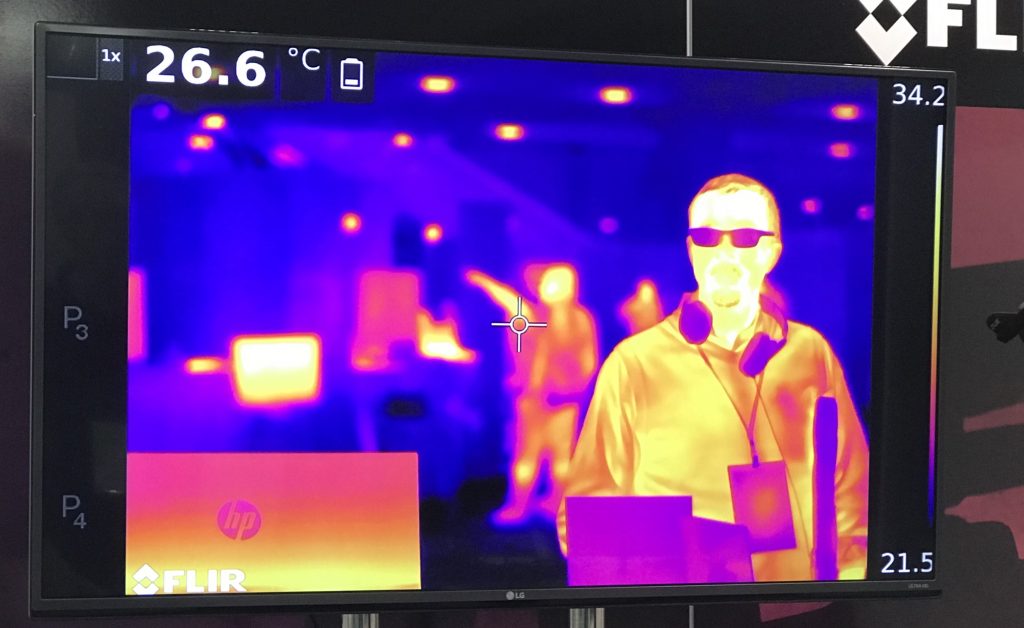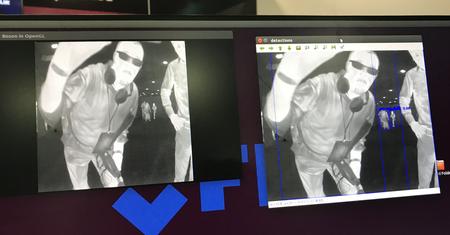What’s “Hot” at NAIAS: Thermal Cameras That Could Prevent Crashes [PHOTOS + REPORT]
Heat-detecting devices could improve autonomous vehicle safety.


Automakers could mass-produce and sell autonomous vehicles someday, but they have to answer one key question before consumers will buy them: Are they safe?
In theory, the most likely answer is “yes”. Since human error causes nearly all automobile accidents in the U.S., advocates of self-driving vehicles say technology can drastically reduce the risk of injury or death. As car companies put more research and development into autonomous vehicles, suppliers are developing systems to improve safety. One company, FLIR Systems, makes thermal imaging cameras. Chris Posch is FLIR’s director of engineering for automotive applications. He displayed how a thermal camera works for reporters covering the North American International Auto Show in Detroit.
Posch says thermal cameras could be ideal for autonomous vehicle systems, because they detect anything that gives off heat–including people.
“This sensor is an excellent sensor for detecting pedestrians, animals, cars, car tires, and the scene in front of you.”–Chris Posch, FLIR Systems.

The advantage thermal cameras have over other sensors is they work well at night, when a regular camera might not see a pedestrian. Posch cited a 2018 crash in Arizona. A woman was crossing her bicycle across a road in Tempe when she was fatally struck by an autonomous vehicle. Uber, the ride-sharing service, was testing the specially-equipped Volvo XC90 on the night of March 18. The National Transportation Safety Board‘s preliminary report shows the vehicle’s self-driving system was operating normally at the time of the crash. According to the NTSB, the Uber system consisted of forward- and side-facing cameras, navigation sensors, radar, and Light Detection and Ranging software. LIDAR works much like radar, but emits pulses of infrared light and measures how long they take to return after hitting nearby objects.
Investigators say the vehicle’s radar and LIDAR detected Elaine Herzberg 6 seconds before the crash. But it did not immediately classify her as a pedestrian. The Volvo was under computer control at the time, but a “backup” driver was behind the wheel to intervene if something went wrong. Less than 2 seconds before the crash, the self-driving system determined an emergency braking maneuver was needed to avoid hitting Herzberg. But the system did not (and was not designed to) warn the driver before impact. Tempe Police say the driver was not paying attention to the road.
Chris Posch says a thermal camera would have been useful in this case.
“This technology will work in complete darkness,” Posch says. “Where it’s dark, and there’s an object in the field of view and coming toward the car, this would very likely be the best sensor to detect a human body approaching.”
But what kind of range does a thermal camera have? Posch says it depends on the field of view of the lens.
“A narrower field can get you out to 200 meters,” Posch says.
The effectiveness of a thermal camera also depends on the speed of an autonomous vehicle’s neural network. The faster the network, the faster it can process what it “sees”, classify it, and react in time to prevent a crash.
FLIR has annotated 14,000 thermal video images and are making them available free to the public.
The NTSB’s final report on the causes of the Arizona crash is pending. The agency’s web site is no longer being updated to the partial federal government shutdown.
Click on the audio player to hear the conversation with WDET’s Pat Batcheller.
NTSB Preliminary Report on Arizona Fatality by WDET 101.9 FM on Scribd
